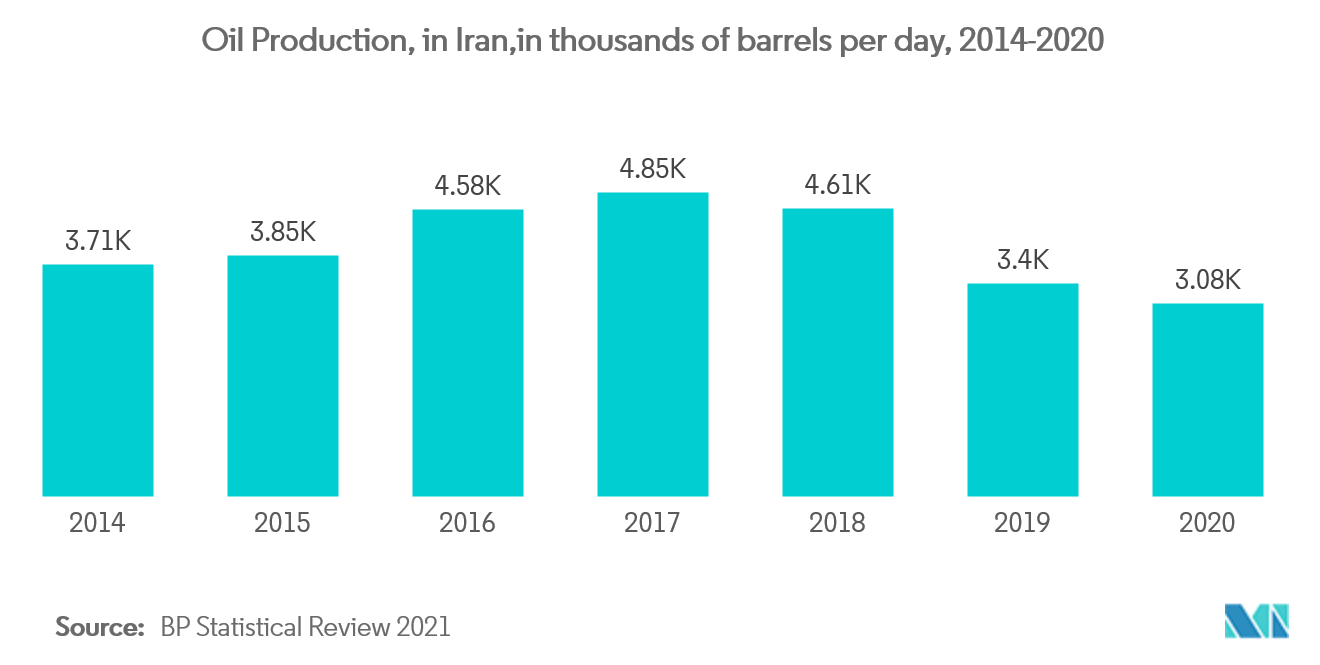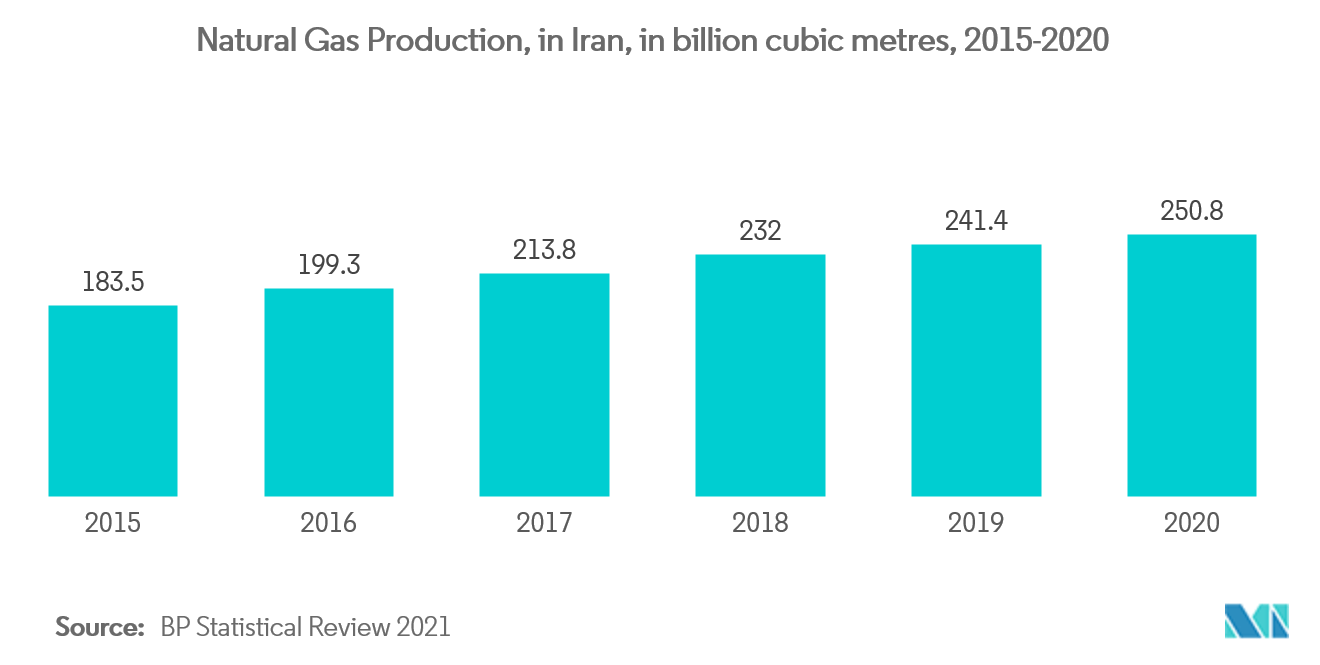Market Trends of Iran Oil and Gas Industry
This section covers the major market trends shaping the Iran Oil & Gas Market according to our research experts:
Upstream Segment to Dominate the Market
- The Iranian energy demand is anticipated to grow significantly in the next two decades. This growth in demand can be attributed to the growing population and an improvement in living standards in the country coupled with chances of dealing with the United States' lifting of sanctions.
- Even though new and renewable energy sources are gaining popularity around the world, petroleum fuel remains a major energy source globally. This trend is expected to continue for the next few decades and favors the growth of the oil and gas upstream market.
- To boost its oil production, Iran plans to increase South Azadegan oil field production to 320,000 barrels per day at the beginning of 2023. As of February 2022, South Azadegan had a contract worth USD 5.6 billion, and a domestic company is developing and completing it.
- However, the old oil fields in the country are seeing a major decline. For instance, the Agha Jari conventional oil field has already recovered 99.58% of its total recoverable reserves, with peak production in 1973. The peak production was approximately 1,025 thousand bpd of crude oil and condensate. Based on economic assumptions, production will continue until the field reaches its economic limit in 2024. The field currently accounts for approximately 1% of the country's daily output. To continue the growth of oil production, new investments will have to be made in the coming years.
- The oil production in the country was around 3,084 thousand barrels per day in 2020, which saw a steep decline from 3,399 thousand barrels per day in 2019. This decline was mostly attributed to declining foreign involvement and the COVID-19 pandemic. However, it is expected to change in 2021 and later as demand for oil and gas increases globally.
- Hence, the upstream segment is expected to dominate the market in the coming years due to increasing investment and large-scale reserves in the country.

Increasing Investment in Upstream and Midstream Oil and Gas to Drive Growth
- The country has been pushing to increase investments in the oil and natural gas infrastructure over the years. However, the sanctions put in place by the United States have caused major disruptions in its plans.
- Oil and gas pipelines have become a major source of interest as they provide easier distribution, especially as the country is surrounded by unstable regimes. For instance, in 2021, Iran's state-owned refiner NIORDC signed a EUR 372 million preliminary deal with the privately-owned Bank Mellat to finance the construction of a new 150,000 barrels per day oil products pipeline to both supply northeast Iran, and possibly also help the flow of products to its eastern neighbors. The near 1,000 km pipeline, named Tabesh, is expected to run through the southern and central and end at the Iran-Afghanistan border. Iran expects the completion to be around 2025.
- Another major example is in July 2021, with the start of injecting crude into the pipeline and oil shipments from the Jask region on the Gulf of Oman coast. This will start adding conduit officially.
- A major upcoming source of revenue for the government is the production of natural gas. The production of natural gas, unlike crude oil, has been increasing rapidly, bucking the trend caused by the pandemic, with around 250.8 billion cubic meters of natural gas produced in 2020, up from 241.4 billion cubic meters in 2019. This trend is expected to continue during the forecast period to increase natural gas demand in the international market due to its lower carbon emission property.
- Further, in September 2021, the Iranian government planned to invest nearly USD 145 billion over the next eight years. Such investments are expected to improve its upstream and downstream and thus would support the country in exporting hydrocarbon products from the countries like China.
- Hence, increasing investments in upstream and midstream oil and gas are expected to drive growth in the market.


